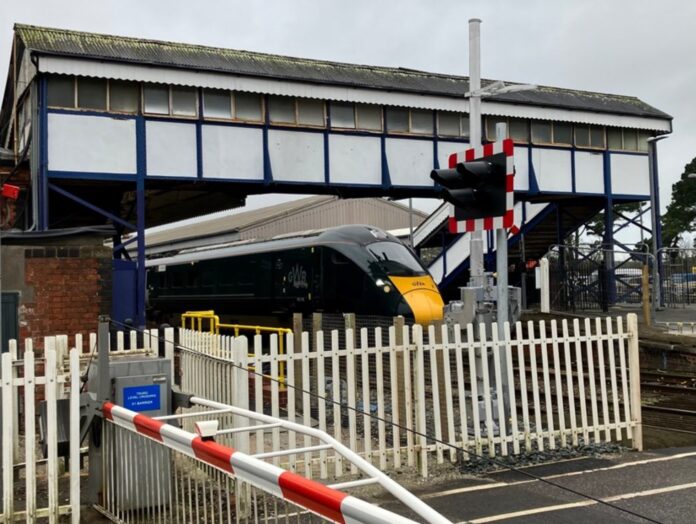Passengers are being urged to check before they travel ahead of Network Rail’s final phase of work to modernise signals in Devon and Cornwall and improve the resilience of the railway in the South West.
Thirteen days of round-the-clock work in Cornwall will begin on Tuesday 27 February and is due to be completed on Sunday 10 March. Work then resumes near Plymouth from Saturday 16 to Thursday 21 March.
Signals that have reached the end of their working life will be replaced with a new digital system. The system will improve the reliability and safety of the railway and new digital technology will allow for real-time information to be provided to passengers.
The work is the third stage of a major programme to transform how trains run in the region. Over the past few months, Network Rail’s contractor Siemens has installed new equipment and signals and laid new cabling over a combined 66 miles of railway. In this final phase of work, the new system will be brought into use and control moved to the regional signalling centre at Exeter, for Cornwall, and the Devon section to Plymouth.
New signals in Cornwall are due to come into use on Monday 11 March, with Devon following on Friday 22 March.
Part of the project is one of the largest programmes of track work ever completed in Cornwall. A team of more than 100 people will work across a 50-mile site to install new equipment that will ease congestion at Truro, remove redundant equipment, and lay new track, sleepers and ballast.
Work will also take place to complete new level crossings at Truro and Lostwithiel that will improve safety and reduce delays on the railway.
GWR is asking passengers to check their journeys before travelling, with buses replacing trains on routes over these dates:
- Tuesday 27 February to Sunday 3 March – line closed between St Austell and St Erth (including the branch line to Falmouth Docks)
- Monday 4 to Friday 8 March – line closed between Liskeard and St Erth (including branch lines to Newquay and Falmouth Docks)
- Saturday 9 to Sunday 10 March – line closed between Plymouth and St Erth (including branch lines to Looe, Newquay and Falmouth Docks)
- Saturday 16 to Sunday 17 March – line closed between Exeter St Davids and Plymouth
- Monday 18 to Thursday 21 March – line closed between Totnes and Plymouth (extending to Exeter St Davids after 21:40 each night)
More information can be found at GWR.com/SouthWestUpgrade
Network Rail sponsor Paul Collyer said: “This is the final chapter of our programme to bring a new system of signals to the region.
“There is never a good time to close the railway but we need to do this so our teams can work round the clock as safely and efficiently as possible. We’d like to thank our passengers for their patience and urge them to check before they travel.
“The new technology will improve reliability in the region and unlock future development of the railway in the area, including the new Mid Cornwall Metro scheme.”
GWR Station Manager for West Cornwall Sharon Holloway said: “This vital improvement work is being conducted in two phases over the next few weeks, first in Cornwall between St Austell and Penzance and then affecting trains through Devon from Plymouth through to Exeter.
“If you are travelling during the period, please check in advance at GWR.com, especially if you are travelling regularly, as replacement buses will be in operation, and your journey may be different on different days.
“Thank you in advance for your patience while Network Rail carry out this significant work.”
Siemens Mobility senior project manager Stephen Mills said: “We are delighted to have worked with Network Rail for the delivery of this programme and proud to be part of enhancing the railway in both Devon and Cornwall.
“Our site teams have been working hard in Devon and Cornwall for past 18 months to get to this point and we look forward to seeing the new signalling system running the railway into the future.”
Photo credit: Network Rail







































 0113 2082620
0113 2082620 info@railbusinessdaily.com
info@railbusinessdaily.com 15 Mariner Court, Wakefield WF4 3FL
15 Mariner Court, Wakefield WF4 3FL

